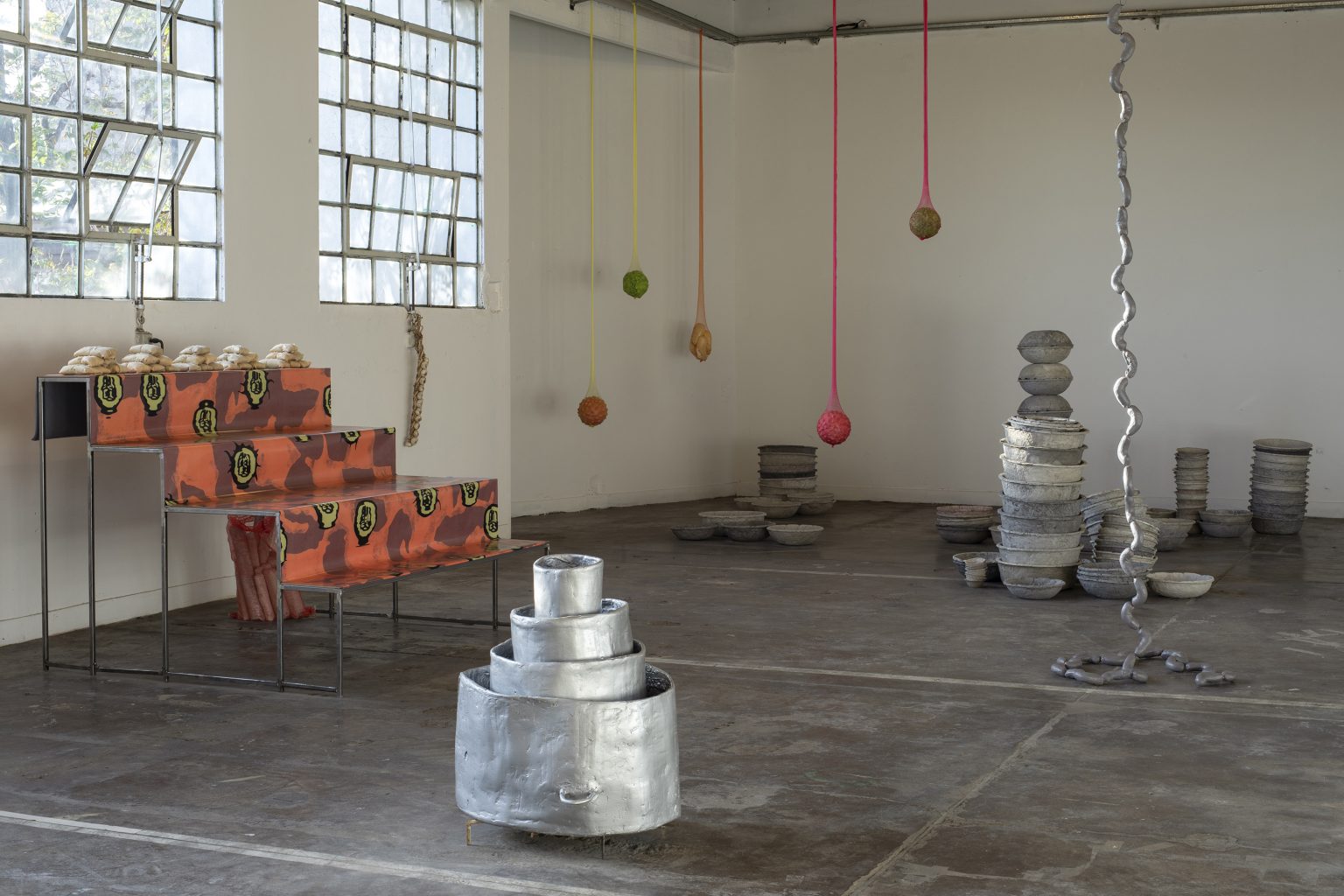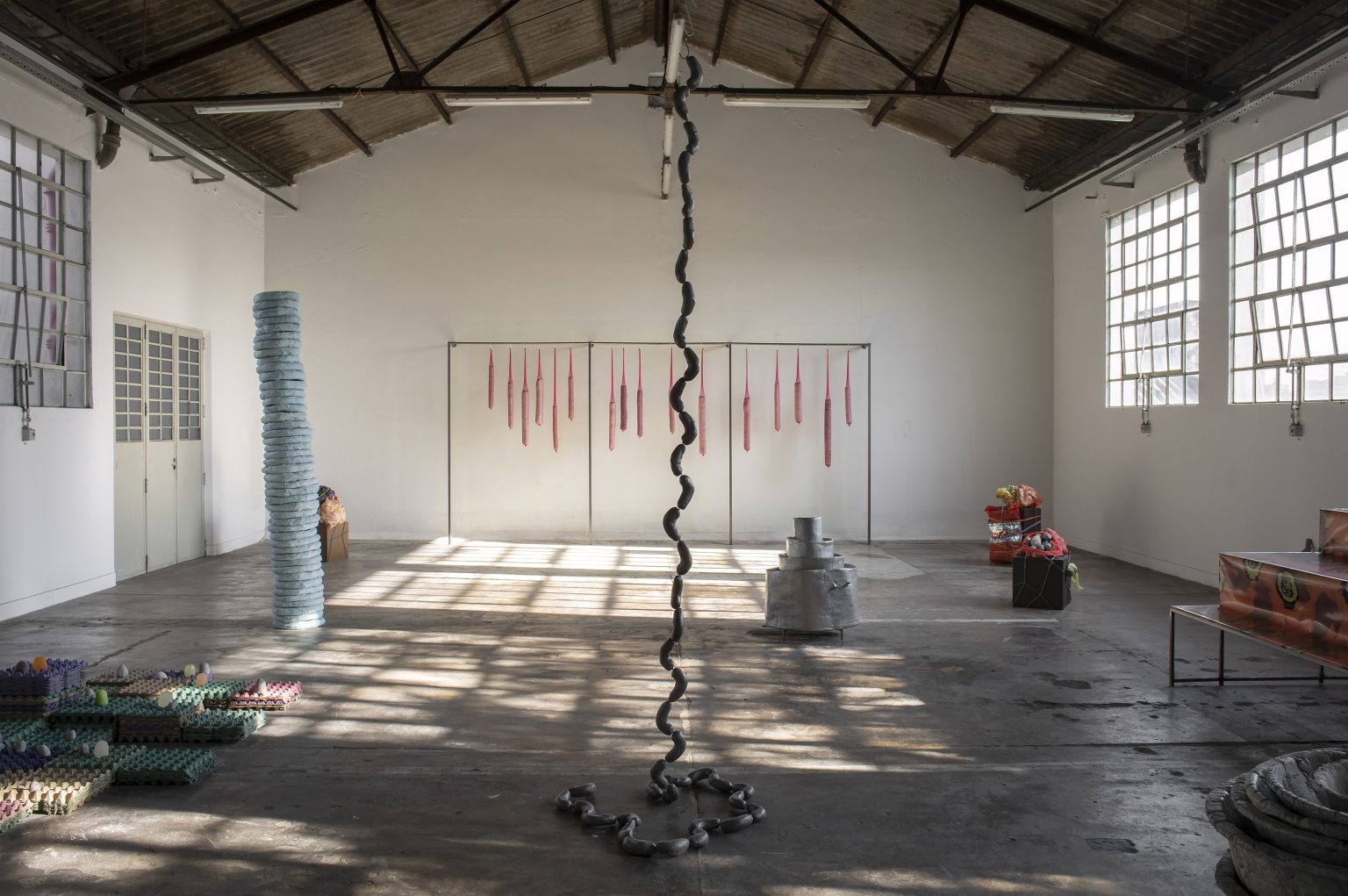287.5 Kilos
lucía reissig
móvil
Curated by Guadalupe Creche y Solana Molina Viamonte
oct 28. — DIC 16. 2023
exhibition view
Ph. Ignacio Iasparra
works
Mamushka de ollas, 2023
Lucía Reissig
Mache, Filler, Synthetic Enamel, and Metal
35.4 x 27.6 x 21.7 in
Roscas, 2023
Lucía Reissig
Paper Mache, Paper Pulp, and Acrylic Paint
100.4 in x 15.7 in diameter
Flor de morcilla, 2023
Lucía Reissig
Rigid Polyurethane Foam, Wire, and Synthetic Paint
236.2 x 5.9 x 5.9 in (variable measures)
Contenedores, 2023
Lucía Reissig
Papercrete, Ferrite, and Adhesive Additive
63 x 157.5 x 118.1 in (variable measures)
Untitled, 2023
Lucía Reissig
Flexible Polyurethane Foam and Tubular Netting
78.7 x 9.8 x 9.8 in
Embutidos, 2023
Lucía Reissig
Papercrete, Tubular Netting, Butcher Hooks, Metal Structure
98.4 x 204.7 x 15.7 in
TEXT
287.5 kilos originates in an archive of digital photographs of fruit, vegetable, and regional-product markets in Argentina and Guatemala.
The images compiled by Lucía as an album reveal the patterns and geometries operative in the sale and display of foodstuffs.
Goods in pyramids and piles, hanging down from hooks, tied up with rope, and dangling in nets—these are among the ways the informal economy organizes its wares in the stalls Lucía dwells on.
287.5 kilos is the total weight of the raw materials used to produce the sculptures and objects in this show.
Just as the kitchen is the place where food is prepared, the studio (in this case, Móvil) is the laboratory where the mixes required to make the sculptures are concocted. The work posits connections between numerical formulas and recipes. Measuring, weighing, mixing, and calculating form part of a practice
that joins taste and technique as well as time, dedication, and care.
At play in the market as food-based device and space of socialization is an attempt to usher in feminist conversations about nutrition policy, the informal economy, and marginalized wisdom.
The pieces include paper pots within paper pots like a nesting doll—the heart of a gathering and feeding space, like a witch’s or soup kitchen’s caldron.
Cassava, potato sacks, and paper sausages wind through the air or hang down from nets. Tamales of different sizes and food carefully wrapped look to one of Reissig’s Guatemalan mother’s ancestral recipes for inspiration, thus drawing on knowledge passed down from one generation and one region to another.
Vessels, bowls, and rings of bread rise above the floor in winding columns that bring Brancusi to mind.
In a notebook, Virginia Woolf wrote a list of words under the heading “Glossary.” In it, hero is redefined as bottle. Ursula K. Le Guin looked to that twisting of language, that strategic pirouette to tell a different story in her book “The Carrier Bag Theory of Fiction.” That text expands the concept of the bottle to encompass any recipient, container, or sack—perhaps the first cultural artifact ever. Recipients and containers are what carry, bear, and collect “ the things of life.”
— Guadalupe Creche




















